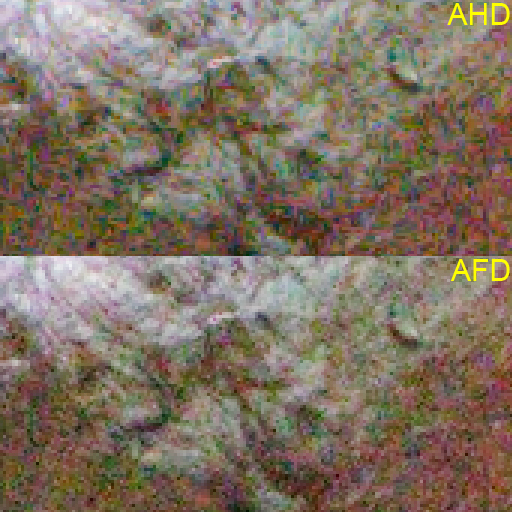Firstly, digital noise does not usually resemble film grain.
I would say it
never resembles film grain, because its physical origin is totally different. To understand the nature of digital noise, we cannot take our RAW converter and look at the images it produces, because the physical shape of noise will depend on the algorithm used by the software.
To understand why digital noise looks so awful, it is necessary to look or analyse the noise in the RAW data, i.e. the pure RAW information before it has been converted to an image. If we do so, we will realize sensor noise is the same as Photoshop's gaussian noise, i.e. a random deviation from the expected value on each pixel that has (almost) no correlation with neighbour pixels. Digital noise has no spatial structure at all, so it's nonsense even make any comparisions with film grain, which has a very well known and artistically appreciated shape. In the origin digital noise can always be considered
one-pixel size, and the shape it turns into after RAW development only depends on the algorithm used, but it will never have a nice end.
In this figure we can see the RAW blue channel of 3 RAW files taken with different exposures (2EV apart). Their exposure was equalized in the end in order to make a comparision:
- The most exposed shot (+4EV) has very little noise.
- The medium shot (+2EV) displays a lot more noise, and its appearance is the same as Photoshop's gaussian noise (i.e. no shape, no grain, just random pixels here and there).
- The lowest exposure shot (0EV) displays even more noise, and because of the high noise amplitude with respect to signal many pixels got clipped to black producing that darker appearance.

But noise in the form of a random gaussian offset added individually on each pixel is something the photographer will never see, because he uses a RAW developer to create an image from the RAW file. It is in the process of RAW interpolation when this gaussian per-pixel noise becomes some textured colour and luminance noise, that will be in any case far from film grain in appearance.
Here is what a noisy RAW file looks like after being developed with two different algorithms:

They look slightly different (remember they come from the same RAW file), both very awful, and both far from pleasant film grain.
_______________
With regard to the impact of noise in B&W digital images, IMO cameras have enough resolution to make the appearance of digital noise after RAW development small enough not to worry about it in the print; it can even produce the illusion of enhanced accutance. And colour noise, which is actually very unpleasant and easy to notice in colour images, is not a problem here. So IMO noise in B&W digital images can be ignored.
It is good to keep noise low in shooting through a good exposure, because that will mean capturing more image detail. But once we have our RAW file, and detail cannot be improved, trying to eliminate noise in pp (at the risk of eliminating detail as well) could be considered not critical at all.
Regards